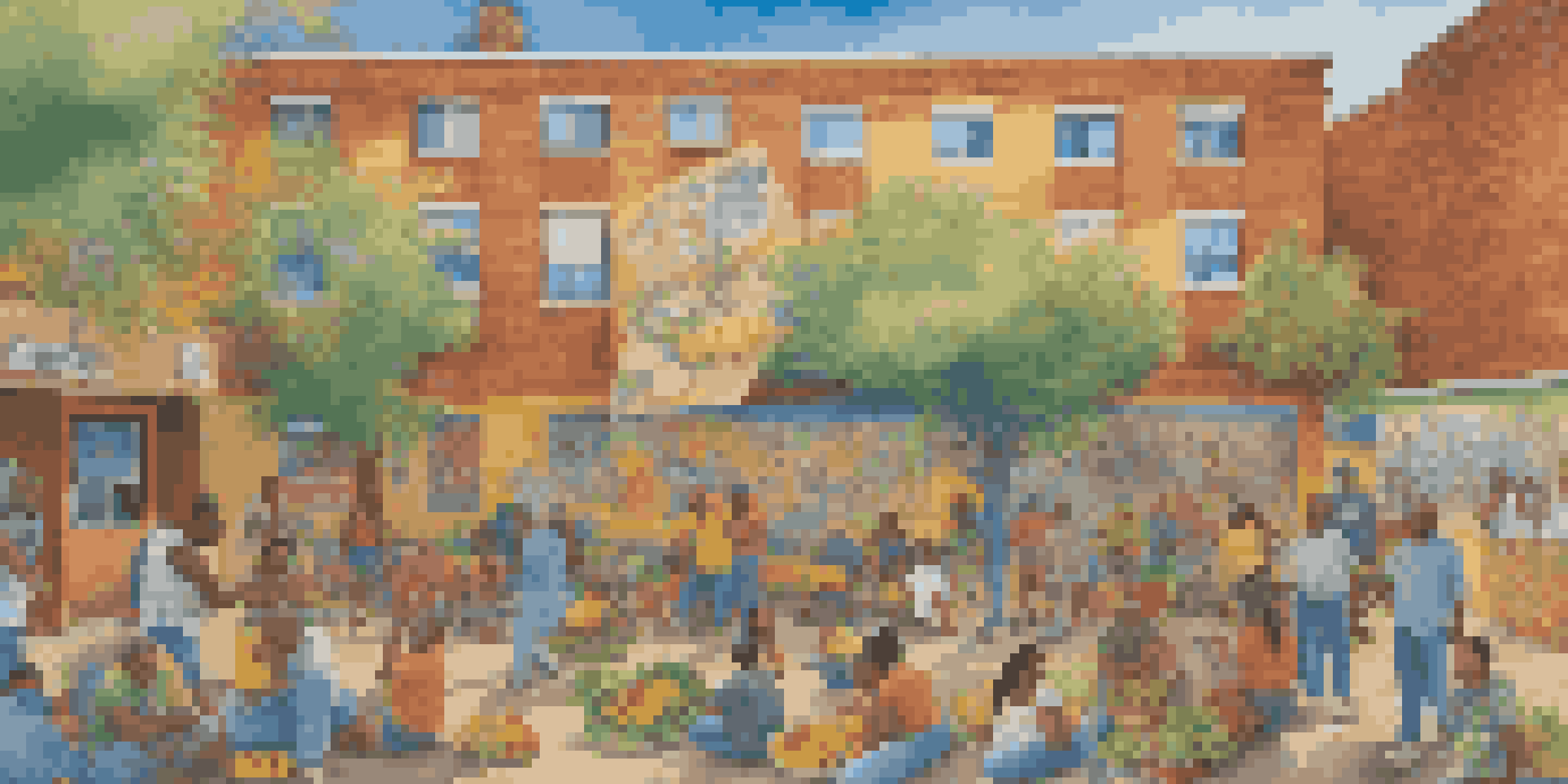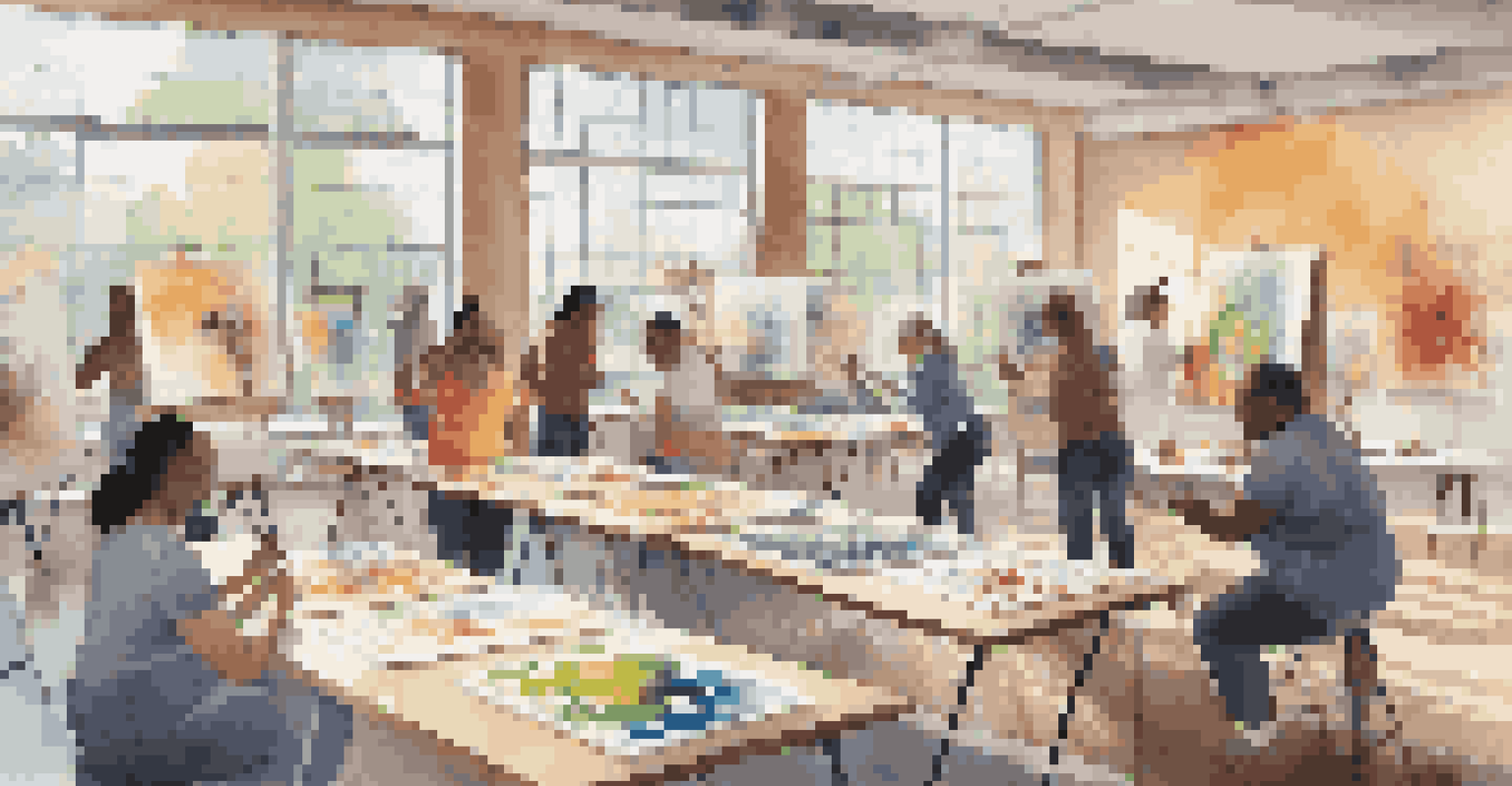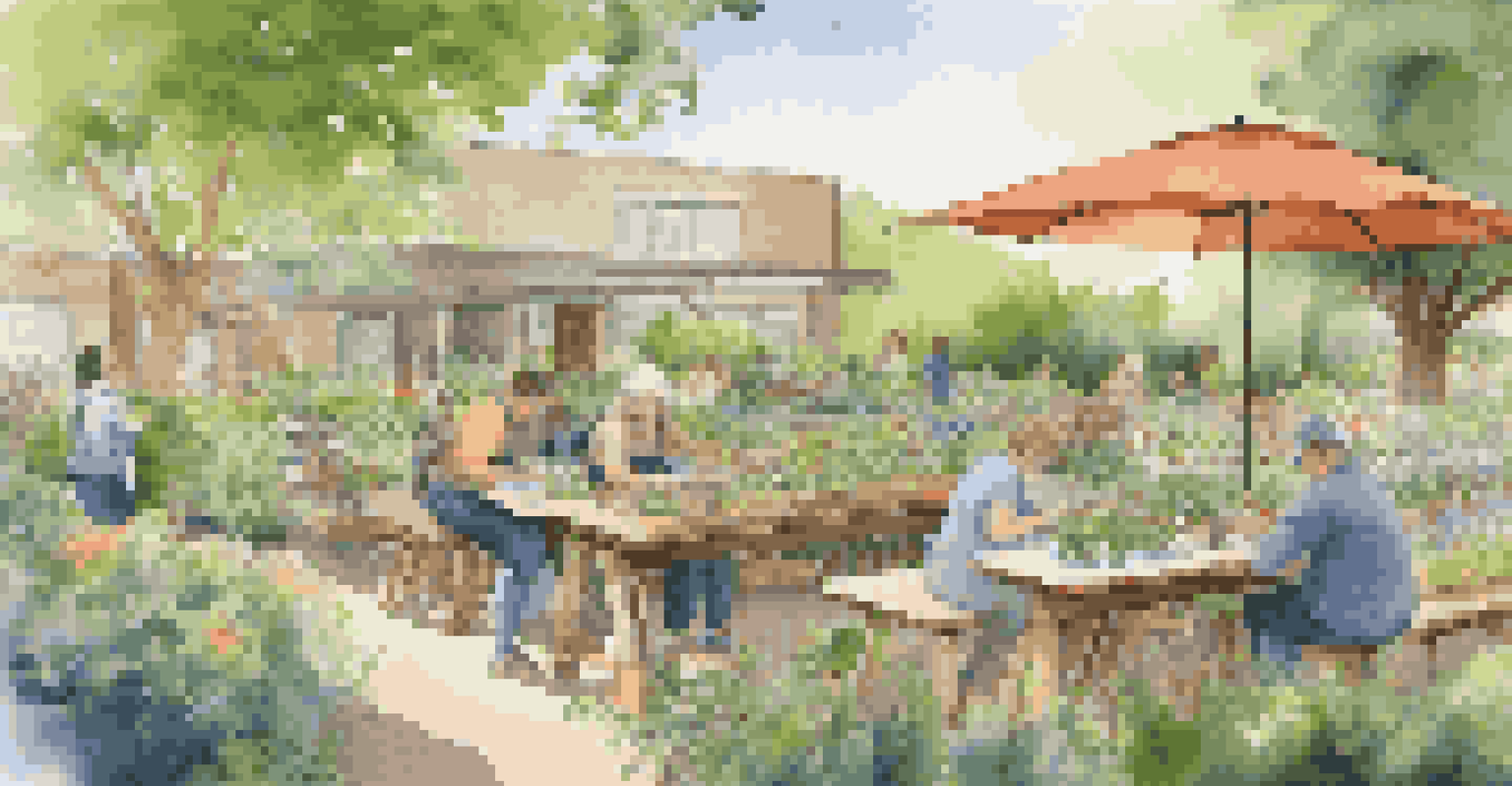Art and Health Disparities: Addressing Inequities Creatively

Understanding Health Disparities in Communities
Health disparities refer to the differences in health outcomes and access to healthcare that are often linked to social, economic, and environmental factors. These inequities can manifest in various ways, such as access to healthy food, quality medical care, and mental health support. For instance, communities with lower socioeconomic status may experience higher rates of chronic diseases due to limited resources and opportunities.
Art is not what you see, but what you make others see.
Cultural factors also play a significant role in health disparities. Different communities may have unique beliefs about health and wellness, which can influence how they approach medical treatment. Understanding these cultural contexts is crucial for developing effective solutions that resonate with diverse populations.
By recognizing the root causes of health disparities, we can begin to address them creatively. This is where art enters the conversation, offering a powerful medium for expression and advocacy that transcends traditional healthcare methods.
The Role of Art in Promoting Health Awareness
Art has an incredible ability to communicate complex ideas in relatable ways. Through visual arts, performances, and community projects, artists can raise awareness about health issues that affect marginalized populations. For example, mural projects in urban neighborhoods often depict health messages that resonate with local residents, making the information more accessible.

In addition to raising awareness, art can foster dialogue within communities about health disparities. Workshops and interactive art sessions can create safe spaces for individuals to share their experiences and discuss health concerns. This participatory approach not only empowers participants but also strengthens community bonds.
Art Bridges Health Disparities
Art initiatives effectively raise awareness and foster dialogue about health disparities in marginalized communities.
Moreover, engaging with art can lead to improved mental health and well-being. Creative expression allows individuals to process their emotions and experiences, which is especially important in communities facing significant health challenges.
Art as a Catalyst for Community Engagement
Art initiatives often bring together diverse groups of people, fostering collaboration and engagement. When community members come together to create, they build relationships that can lead to collective action on health issues. For instance, community gardens that incorporate art can serve as hubs for social interaction and education about nutrition.
Creativity takes courage.
These collaborative art projects can also highlight local health resources, encouraging residents to utilize services they might not have known about otherwise. By creatively showcasing available support, art can bridge the gap between communities and healthcare providers.
Additionally, the act of creating art itself can instill a sense of ownership and pride within communities. This empowerment can motivate individuals to take charge of their health and advocate for necessary changes in their environment.
Case Studies: Successful Art and Health Initiatives
Many cities have implemented successful art-based initiatives aimed at addressing health disparities. For instance, the 'Art for Health' program in a community in Los Angeles integrated art workshops with health education, resulting in increased awareness about diabetes management among participants. These workshops not only educated individuals but also created a supportive network.
Another example is the 'Healing Through Art' initiative, which uses art therapy to support individuals in underserved communities facing mental health challenges. Participants reported feeling more connected and less isolated, showcasing the potential of art to foster healing.
Community Engagement Through Art
Collaborative art projects empower community members, building relationships that lead to collective action on health issues.
These case studies illustrate how targeted art initiatives can effectively address specific health issues while simultaneously building community resilience and cohesion.
Challenges in Implementing Art-Based Health Programs
Despite the potential benefits, implementing art-based health programs is not without challenges. Funding can be a significant barrier, as many art initiatives rely on grants and donations, which are often limited. Securing sustainable financial support is crucial for the longevity of these programs.
Moreover, there can be resistance from healthcare professionals who may not fully understand the value of integrating art into health initiatives. Educating stakeholders about the benefits of creative approaches is essential for fostering collaboration between the arts and health sectors.
Lastly, ensuring inclusivity in art programs is vital. It's important to engage diverse voices from the community to ensure that initiatives reflect the needs and experiences of those they aim to serve.
The Future of Art in Addressing Health Disparities
The intersection of art and health presents exciting opportunities for the future. As more organizations recognize the value of creative approaches, we can expect to see an increase in funding and support for art-based health initiatives. This shift could lead to innovative solutions that directly address the unique needs of underserved communities.
Moreover, technology is playing a growing role in expanding access to art and health resources. Virtual art workshops and online campaigns can reach individuals who might not otherwise participate in traditional programs, thereby broadening the impact.
Challenges in Art-Based Programs
Funding limitations and the need for inclusivity present significant challenges in implementing sustainable art-based health initiatives.
As we look ahead, fostering partnerships between artists, healthcare providers, and community organizations will be essential. By working together, we can harness the power of art to create lasting change in health equity.
Conclusion: Embracing Creativity for Health Equity
Addressing health disparities requires a multifaceted approach, and art has emerged as a vital tool in this endeavor. By using creativity to engage communities, raise awareness, and promote dialogue, we can tackle these inequities head-on. The stories and experiences shared through art can inspire change and foster a sense of belonging among individuals.
As we continue to explore the relationship between art and health, it's essential to remain open to new ideas and collaborations. By embracing creativity, we can empower communities to advocate for their health and well-being.

Ultimately, the integration of art into health initiatives is not just about improving health outcomes; it's about celebrating the resilience and creativity of communities in the face of adversity.